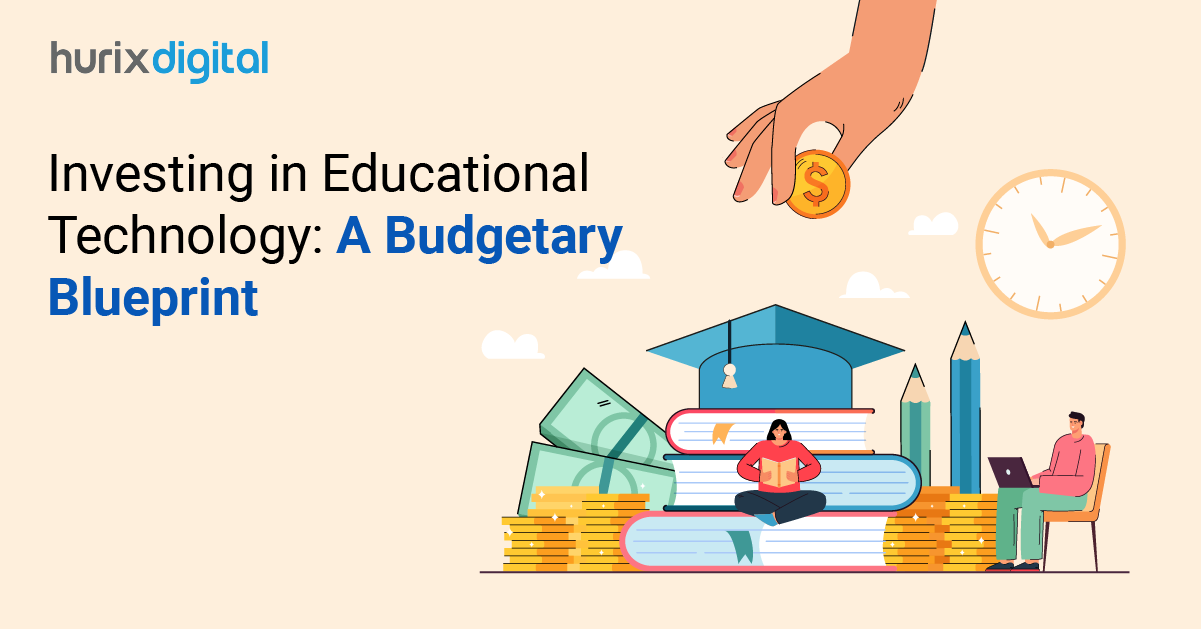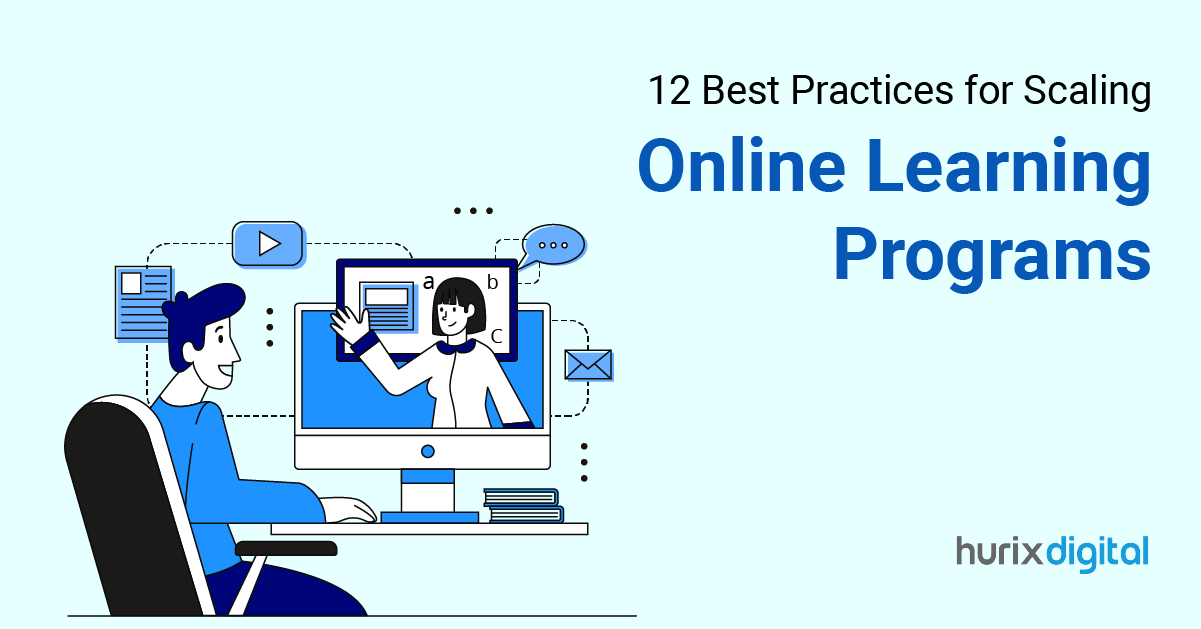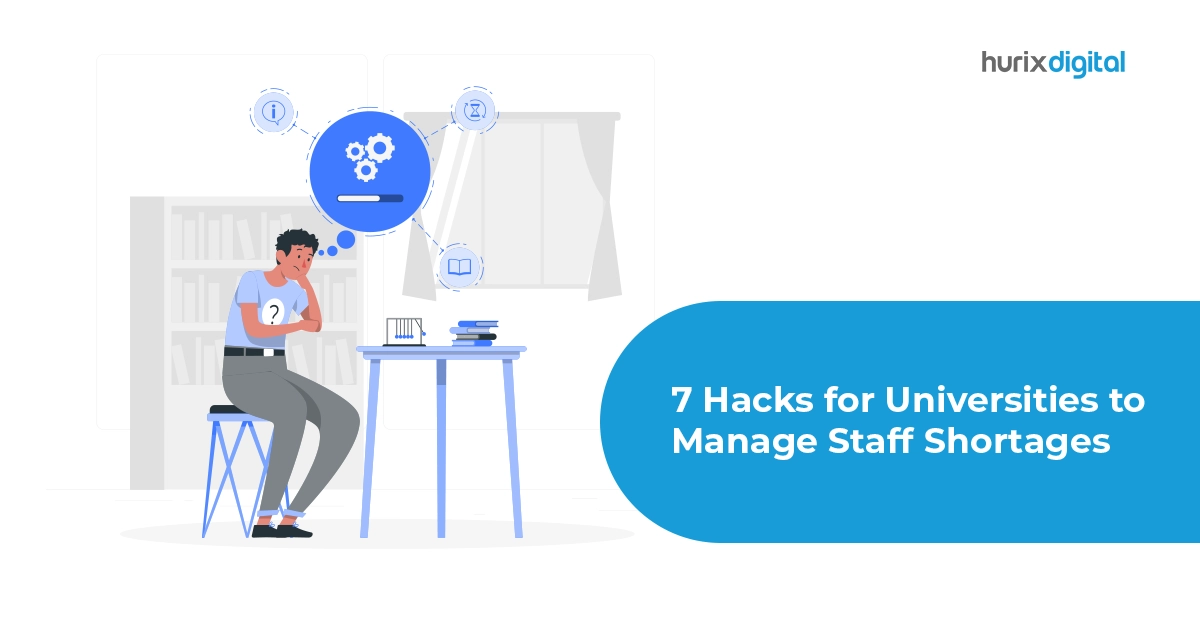
Investing in Educational Technology: A Budgetary Blueprint
Summary
This blog discusses budgeting strategies for EdTech investments, covering challenges, user-centric design, scalability, data safety, partnerships, professional development, analytics, agile budgeting, and ROI monitoring.
Some of the most notable transformations brought about by technology lie in the education sector. Whether transforming learning delivery or making education more accessible, EdTech has made it all possible.
Statistics say that by the end of 2025, the education industry will have reached an estimated value of $7.3 trillion!
That said, the industry remains starved of capital compared to other sectors. While the global healthcare market cap rests at $5 trillion, education remains at $300 billion.
In this blog, you will read about key budgeting strategies for EdTech investments that will help you create a balanced budget allocation for EdTech.
Table of Contents:
- Existing Strategies and Challenges with EdTech Investments
- Budgeting for Innovation: Achieving a Balanced Budget Allocation for EdTech
- Build a Transformative EdTech Environment
- Conclusion
Existing Strategies and Challenges with EdTech Investments
The pandemic played a role in rattling investment scenarios across all sectors. However, it was the educational sector that particularly took the hit. Although the capital markets changed after COVID-19, the educational industry was resilient.
Today, this industry has plenty of opportunities for growth and innovation.
One of the chief challenges today is the complexity of seeking funding from investors. Venture capitalists and other investors thoroughly scrutinize an EdTech company’s capabilities to balance novel technological innovations with tangible, feasible outcomes.
Currently, investors’ chief concern is investing in companies that can significantly improve learning outcomes. Furthermore, although artificial intelligence is also a highlight, investors are held back by the lack of proper integration and implementation methods of AI into EdTech systems at K12 schools.
Careful implementation and training are necessary to make AI functionalities truly usable at the student level. However, these aspects remain partially explored and largely unaddressed, a major roadblock in the investment scene.
Several strategies exist for EdTech investments that can help you strike a good balance and minimize risks—let’s look at them now.
Also Read: 5 Ways Higher Ed Institutions are Using Tech to Support Neurodiversity
Budgeting for Innovation: Achieving a Balanced Budget Allocation for EdTech
Statistically, the education sector remains under-digitized, accounting for less than 4% of digital spending globally. With that said, reports predict that EdTech spending will nearly double, reaching a value of $404 billion by 2025.
Trends suggest that technologies like AR/VR, AI, robotics, and blockchain will be most in demand in EdTech.
Let’s look at a few strategies to help you streamline your EdTech ROI (return on investment) from investing in educational technology.
1. Focus on User-Centric Design
A meaningful investment focuses on products designed with user intent and usage patterns in mind.
Assess your student’s educational needs before investing in developing or procuring EdTech products. This will ensure that the technology you invest in has a high chance of enhancing learning outcomes rather than increasing the complexity of the educational ecosystem.
You can work with students and teachers to establish continuous feedback loops to measure the technology’s performance.
2. Invest in Scalable Solutions
With K12 educational institutions, scalability should remain the focus of any technological investment. The rapid adoption of digital learning solutions calls for a robust back-end that helps the administration adjust the delivery and scope of the technology according to needs.
Invest in infrastructure capable of handling increases or decreases in demand without compromising student experience with the portals or interfaces. Doing this helps ensure that innovative solutions remain accessible to a larger audience.
3. Emphasize Data Safety
It is important to consider investing in cybersecurity and data safety measures simultaneously. EdTech uses sensitive student data, which may include their learning preferences, patterns, capabilities, enrolment information, etc. It is important to have an integrated security system that can protect student data from attacks and breaches.
Consider investing in reliable security technologies like blockchain. Look for automation capabilities that track changing regulations and compliance requirements.
4. Collaborate with Educational Institutions
Invest in partnerships or relationships with other educational institutions to enhance learning integrity and knowledge sharing. This will help you understand how other schools are leveraging technology. Establishing reliable partnerships will help you align educational goals with technological innovations, allowing you to extract maximum benefit from the technologies you have invested in.
It helps you ascertain that these investments have high value concerning the educational process.
5. Continuous L&D
Invest in continuous learning and development. Conduct workshops for all stakeholders and invite speakers from the core industry who can share insight on the innovations in EdTech.
This will help your institution stay ahead by adopting high-value innovations into your workflows, thus setting an example for other institutions.
6. Continuous Monitoring
Although this is not directly related to investment, measuring the performance of your technology helps you understand where it can be better utilized.
Gauging student and teacher satisfaction with the implemented EdTech solutions is also important. The data you gather through monitoring can be used to refine education delivery.
Build a Transformative EdTech Environment
Investing in educational technology is not just about purchasing the latest tools; it’s about creating a transformative environment that continuously evolves to meet the needs of students and educators.
Here are additional strategies to ensure your EdTech investments foster a truly innovative educational ecosystem:
1. Foster a Culture of Innovation
Encourage a culture that embraces experimentation and innovation. Allocate part of your budget to pilot programs that test new technologies on a small scale before wider implementation. This allows you to assess their impact and make informed decisions about scaling them across the institution.
2. Prioritize Professional Development
Ensure that educators are well-equipped to integrate new technologies into their teaching practices. Invest in ongoing professional development programs focusing on effective technology use, which will help educators enhance their digital literacy and teaching methodologies.
3. Leverage Data Analytics
Utilize data analytics to track and measure the effectiveness of your EdTech investments. By analyzing student performance, engagement, and feedback data, you can gain insights into which technologies are most effective and adjust your strategies accordingly.
4. Adopt an Agile Budgeting Approach
The fast-paced nature of technological advancements requires an agile approach to budgeting. Allocate resources in a way that allows for flexibility, enabling you to reallocate funds as needed to capitalize on emerging trends or address unforeseen challenges.
5. Engage Stakeholders
Involve all stakeholders—students, educators, administrators, and parents—in the decision-making process when selecting and implementing new technologies. Their input is invaluable in ensuring that the solutions you choose meet the actual needs of the users and contribute to the overall educational goals.
6. Monitor ROI Continuously
Regularly assess the return on investment of your EdTech initiatives. Establish clear metrics for success, such as improvements in student outcomes, teacher satisfaction, and operational efficiency. Use this data to make informed decisions about future investments and to justify ongoing funding for successful initiatives.
Also Read: Embracing Evolution & Navigating Higher Education in the 21st Century
Conclusion
Investment is always a sensitive subject, and there is a high emphasis on achieving the right balance between innovation and outcomes. Especially in the education sector, EdTech investments need careful consideration to help ascertain their value against their initial costs.
Partnering with reputed, reliable technology providers like Hurix Digital is an excellent way to ascertain that your EdTech investments have a high ROI.
Hurix Digital provides reliable technologies and infrastructure for K12 and higher education to enhance student learning and outcomes. This includes course development services, staffing solutions, and more.
Visit Hurix Digital today to explore more reasons to invest in a partnership with us.

Senior Vice President – Business Development
Over 25 years of experience in the edtech and workforce learning industry with strong skills in Business Development, Customer Relationship Management (CRM) and Strategy.










